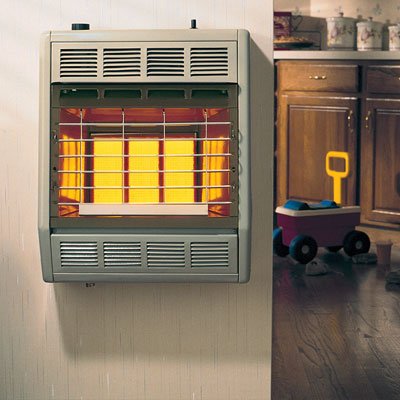A gas line should be buried 24 inches under driveways and parking areas, and at least 15 to 18 inches under non-traffic and private areas. Ensure to bury the gas line with a continuous tracer wire from riser to riser terminating above the finished grade.
It’s not about running your own gas line by yourself, it’s about knowing how deep to bury the gas line to avoid having an issue later on. Trust me, you wouldn’t want to dig and cause lasting harm to the structural integrity of your state.
Every state or local government has its separate depth size recommended for people of that area to bury the gas line. However, these recommended depths are usually between 15 to 24 inches under nontraffic and traffic areas.
Table of Contents
Does Gasline Need to be Buried?
Yes, the gas line needs to be buried to ensure it is not exposed to anything that could cause an explosion in the state. Accidental exposure to gas lines may cause an explosion, fire, and many other things, therefore, burying the gas line is the best way to prevent such accidental exposure and explosion from happening.
As it is the duty of the government to protect the lives and property of its citizens, the government already knows the dangers of gas and how dangerous it could be if it is just exposed without being buried.
Moreover, the main idea of burying a gas line is not just to make the state look clean without too many pipes scattered everywhere, but it is to ensure that the gas pipes are protected from accidental exposure that could cause an explosion.
If the state did not mandate its people to bury gas lines deep underground, there may be series of explosions and death being recorded every day because of the gas line.
To even show you how important the gas lines are to be buried, the government imposed a huge amount of money as fines to anyone that accidentally damaged the gas line while digging. However, the question now is, how deep to bury gas line? How deep is a gas line buried?
How Deep to Bury Gas Line?

Gas lines should be buried 24 inches deep under driveways and parking areas, and 15 to 18 inches deep under nontraffic areas. Ensure to bury the gas line with a continuous tracer wire from riser to riser terminating above finished grade.
As reiterated earlier, every state has a different depth they want people to bury their gas lines. But all the depths range from 15 to 18 inches in non-traffic areas; that is, areas that are not always crowded and 24 inches in traffic areas.
For those in California, Califonia’s regulations mandate its citizens to bury their gas lines at least 18 inches under the ground and shall be protected from corrosion. Those in New York and New Jersey are mandated to bury their gas lines 24 inches deep under the ground with enough cover.
In the UK, the Health and Safety Executive recommends that the gas line be buried 28 inches which are approximately 750 millimeters under a road or verge, 23 inches deep which is approximately 600 millimeters under a footpath, and 14 inches deep which are 430 millimeters under the private ground.
However, when you look at the depths mandated by different states to bury gas lines, you will notice they differ in certain areas. Well, the reason for that is not far-fetched.
As reiterated earlier, gas lines need to be hidden carefully where there won’t be any accidental exposure to them. The areas with higher inches (24 inches in the US and 28 inches in the UK) are mostly areas with lots of traffic. Those areas people usually cluster all the time.
Unlike the private grounds and non-traffic areas where people cluster once in a while, the road is always busy day and night. Therefore, the gas line needs to be buried deep to avoid the heavy usage of the road affecting the gas line.
We all know how the road can be sometimes, there can be road rage that could lead to shootings. There could be an accident that can be so destructive to open ground. Some particles from the car may dig some holes in the ground.
However, if the gas line is not buried deep enough on the road where the accident occurred, it could lead to an accidental exposure which can lead to an explosion. The explosion may not just affect the car alone, it may affect other cars on the road at that time and may even affect buildings if there is any around. That is the reason why traffic areas are buried deeper than non-traffic areas.
Also, there are codes that need to be followed. To know this code, you need to either contact 811 or contact your local building department to enquire about the code regarding the depth of the gas line in your area.
Apart from that, you also need to ensure that the bottom of your ditch is clear of any rocks or debris that may cause any issue with the pipe in no time. Since the pipes are mostly plastic, the ditch needs to be clear. If it is rough, dug a little deeper to get a clean spot.
Meanwhile, after you are through with all the digging and installations, before covering the pipe, ensure that your work was inspected by an inspector. This is very important. And after covering the gas line, the underground piping has to be detectable. Please take note of this.
Since both electrical and gas lines are buried with the same 15 to 24 inches underground, if you want to bury them on the same trench, ensure to separate the two systems by 12 inches of well-tempered earth or a treated plank. I would recommend you call the appropriate body in charge of gas line pipes in your area for more information.
How Deep to Bury Gas Line in Michigan?

Gas line depth in Michigan is 18 inches deep under non-traffic areas such as private properties, and 24 inches deep under traffic areas such as roads.
Who Do I Call For Gas Line Inquires?
For more information about gas lines and where they are located, call 811. 811 is the gas line number in the United States and 0800 111 999 is the hotline for gas line information in the UK.
These numbers are there to guide you in case you need any information about the gas line. It is better to call these numbers before digging anything to avoid damaging what you are not supposed to damage. Remember that there is a huge fine for those that damage gas lines whether accidentally or not. So, to be on the safer side, call the numbers to come and check it for you.
Also, you are urged to call the number three (3) days before starting the work. This is to enable the hotline to respond to your request. You don’t need to call them on the same day when the work will start, call them 3 days ahead in case they need to do a physical inspection before you start the work.
Nevertheless, if you do not wish to call the numbers, there are several companies that provide gas line digging services. You can contact them to come to do the work for you. But, before contacting any company for digging services, ensure to read about them. Ensure they are licensed to do so and they have done such works in the past. Don’t just give anyhow person the work to avoid landing you into huge trouble.
How to Bury Gas Line
- First of all, can you do it by yourself? If you cannot do it by yourself, get someone or a company that renders such services to do the work for you to avoid hitting other buried gas lines.
- To bury the gas line underground, the first thing you need to do is to get a mechanical permit to run the gas line. You need to obtain a permit before digging and burying any underground gas line. This permit is to ensure that you are doing the right thing. It is to ensure that you are on the right track to avoid hitting other buried gas lines.
- You need to get PE pipes with riser and fittings.
- Now dig your trench at least 24 inches in a traffic area and 15 to 18 inches in a non-traffic area
- The next thing to do after digging the trench is to cut and lay the pipes you’ve already purchased with risers vertical and plumb.
- Ensure to pressure test the pipe with air.
- After the work is done, call for an inspection. After the inspection is done, your work will be approved
- After the work is approved, the next thing to do is to connect “ends of pipes” to source and other gas lines
- Before wrapping up the work, verify that there is no leak coming from any of the connections made.
- As long as you are approved and no gas leak anywhere from the connection, you are good to go.
Conclusion
While digging a gas line, do not by any means hit another gas line that was already buried underground. If possible, call 811 to inquire from them first before digging and while digging, ensure you it’s 24 inches deep under driveways and parking areas and 15 to 18 inches deep under non-traffic areas.









